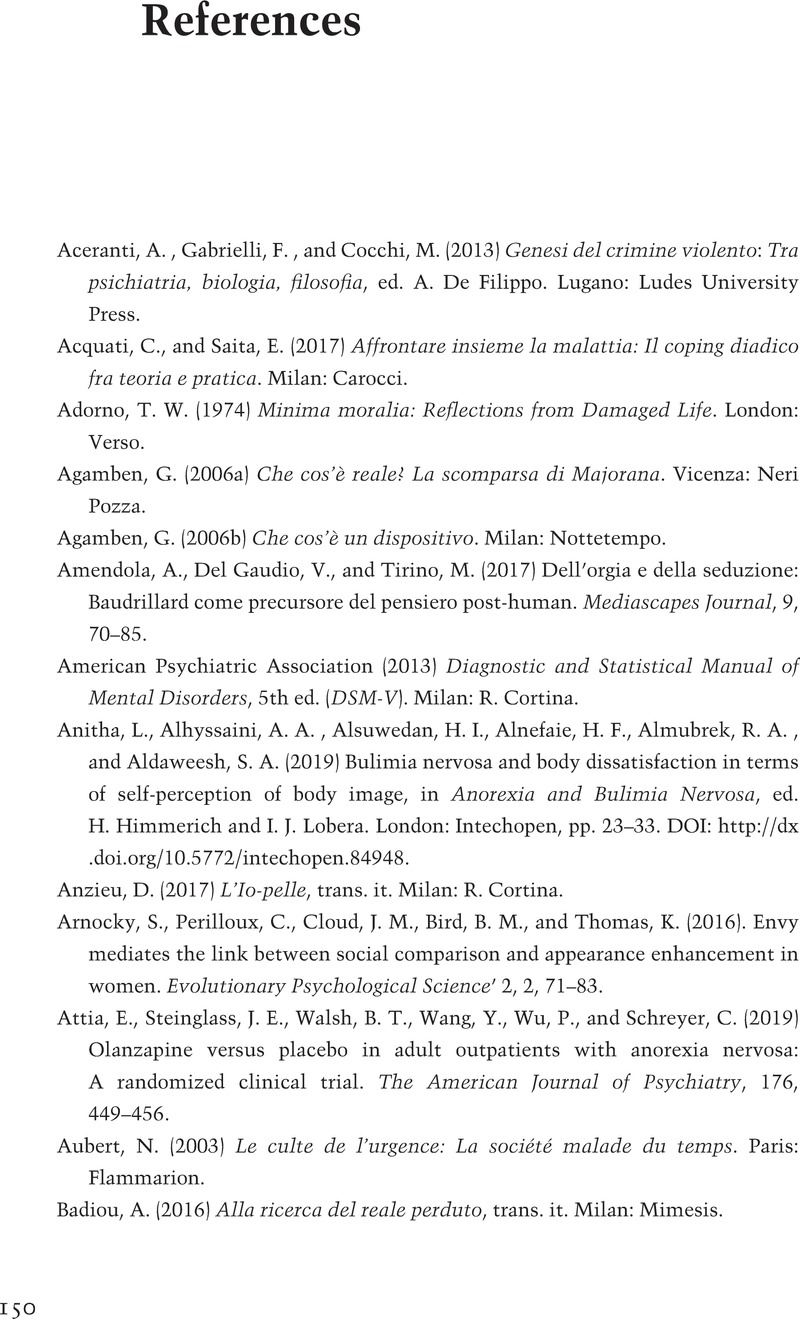Book contents
- Body Image and Eating Disorders
- Body Image and Eating Disorders
- Copyright page
- Contents
- Acknowledgments
- Part I Contemporary Perspectives in Anthropology, Philosophy, and Psychology on the Human Body: An Introductory Overview
- Part II Brain without Body, Body without Brain, and Contemporary Body Image Disorders
- Part III The Hypermodern Contradictory Relationship with Food
- Part IV Which Possible Horizons? Some Final Considerations
- References
- Index
- References
References
Published online by Cambridge University Press: 26 May 2022
- Body Image and Eating Disorders
- Body Image and Eating Disorders
- Copyright page
- Contents
- Acknowledgments
- Part I Contemporary Perspectives in Anthropology, Philosophy, and Psychology on the Human Body: An Introductory Overview
- Part II Brain without Body, Body without Brain, and Contemporary Body Image Disorders
- Part III The Hypermodern Contradictory Relationship with Food
- Part IV Which Possible Horizons? Some Final Considerations
- References
- Index
- References
Summary

- Type
- Chapter
- Information
- Body Image and Eating DisordersAn Anthropological and Psychological Overview, pp. 150 - 165Publisher: Cambridge University PressPrint publication year: 2022



